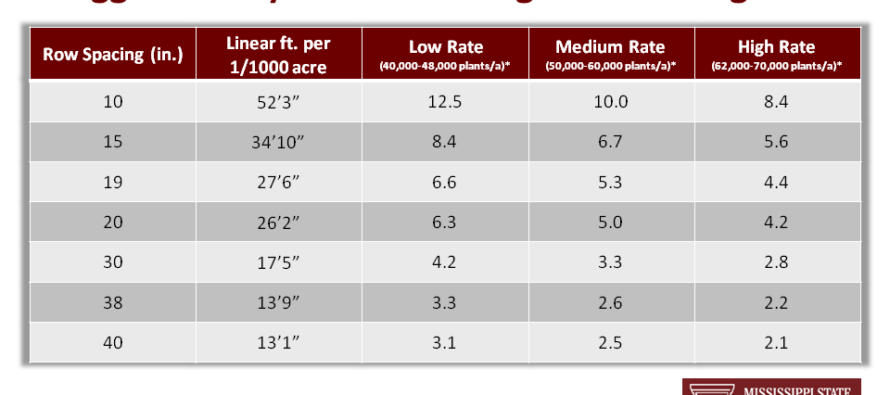Seeding Rates and other Grain Sorghum Planting Tips

 Mississippi growers will likely plant well more acres to grain sorghum than previous years. This article will outline some key tips to employ during the planting process to help get your sorghum crop up and on its way to producing a successful crop.
Mississippi growers will likely plant well more acres to grain sorghum than previous years. This article will outline some key tips to employ during the planting process to help get your sorghum crop up and on its way to producing a successful crop.
- It is essential to kill weeds with either tillage or a burndown herbicide prior to planting sorghum. Herbicide options to control weeds postemergence are very limited and, of course, there is no broad spectrum herbicide-resistant product available to clean up a mess.
- A modest population goal of 40,000 – 70,000 plants per acre will optimize productivity of dryland sorghum. This allows sorghum to better tolerate stress common during July and August without sacrificing yield, plant and stalk health. Given favorable environmental conditions, sorghum has outstanding ability to enhance potential. However, if you plant a high density, you are locked into hoping you are blessed with conditions that meet those considerable demands, or suffering significant disappointment if not.

- Sorghum should be generally be planted 1 ¼ – 1 ½ inches deep depending on soil texture and soil moisture. Deeper depth is fine for sandy soils, particularly if soil moisture is short.
- Soil temperature determines germination rate and needs to be at least 65 degrees F in the morning to ensure quick, reliable emergence. This temperature is considerably warmer than that required to germinate corn and even soybeans.
 Considering we have plenty of glyphosate tolerant pigweed in many fields where sorghum will be planted and limited herbicide options for postemergence use, you better use a strong residual herbicide program to control weeds. Lexar is the benchmark for sorghum weed control. It contains three diverse modes of action to attack weeds and combat resistance. The mesotrione component is a new, unique mode of action, and is critically helpful for controlling glyphosate-resistant pigweed and morningglories.
Considering we have plenty of glyphosate tolerant pigweed in many fields where sorghum will be planted and limited herbicide options for postemergence use, you better use a strong residual herbicide program to control weeds. Lexar is the benchmark for sorghum weed control. It contains three diverse modes of action to attack weeds and combat resistance. The mesotrione component is a new, unique mode of action, and is critically helpful for controlling glyphosate-resistant pigweed and morningglories.
Write a comment
No Comments
View comments




Let me tell You a sad story ! There are no comments yet, but You can be first one to comment this article.
Write a comment